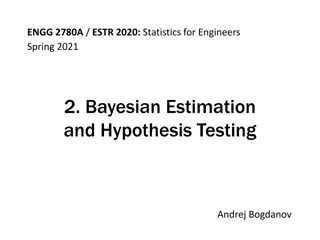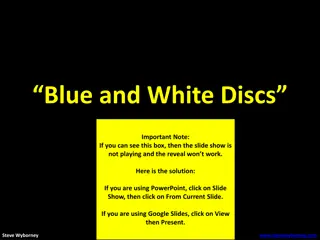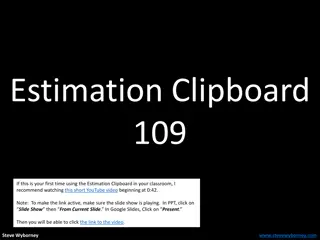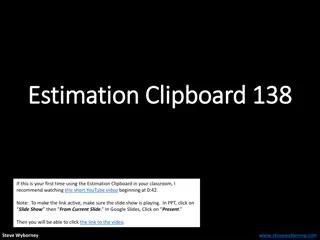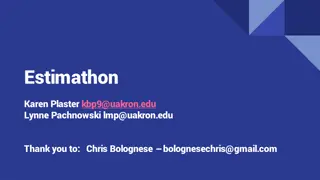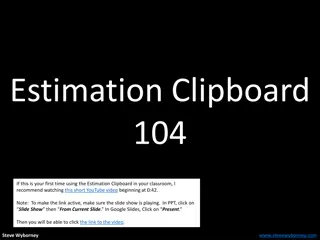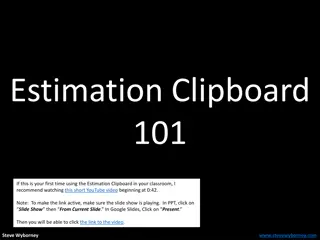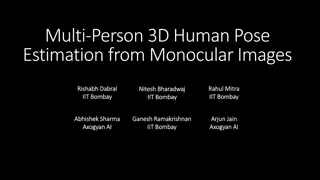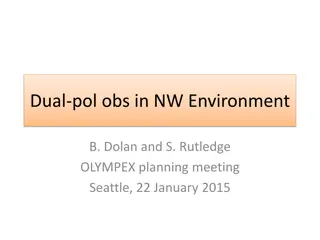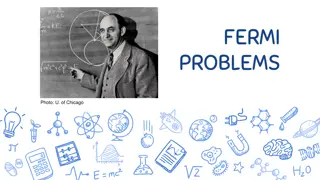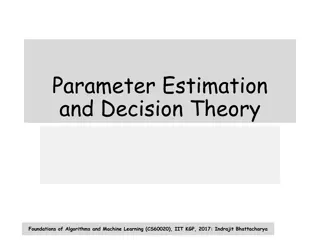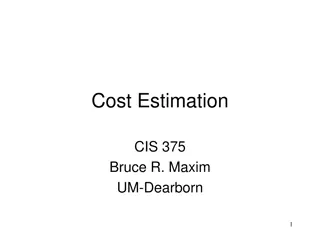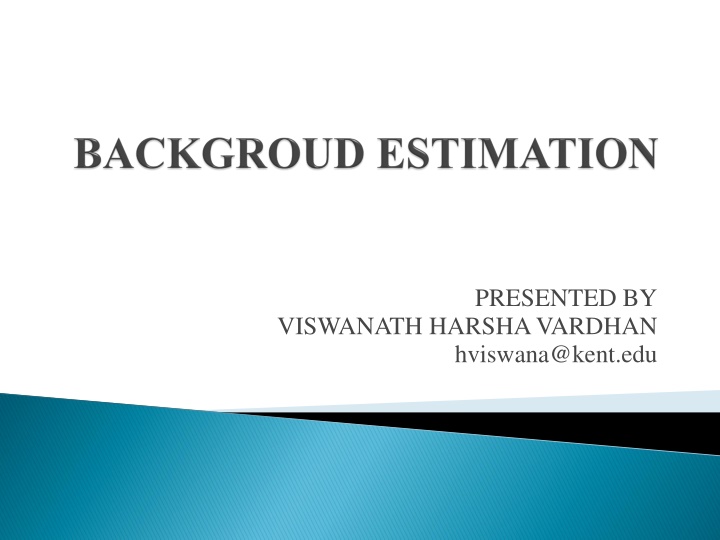
Advanced Image Smoothing Techniques for Document Background Estimation
Explore the innovative approach of polynomial smoothing for accurate and efficient document background estimation in images. Learn about the methodology, results, and conclusions derived from this advanced image processing technique.
Download Presentation

Please find below an Image/Link to download the presentation.
The content on the website is provided AS IS for your information and personal use only. It may not be sold, licensed, or shared on other websites without obtaining consent from the author. If you encounter any issues during the download, it is possible that the publisher has removed the file from their server.
You are allowed to download the files provided on this website for personal or commercial use, subject to the condition that they are used lawfully. All files are the property of their respective owners.
The content on the website is provided AS IS for your information and personal use only. It may not be sold, licensed, or shared on other websites without obtaining consent from the author.
E N D
Presentation Transcript
PRESENTED BY VISWANATH HARSHA VARDHAN hviswana@kent.edu
Problem Statement Proposed Methods Results Conclusion References
Given an area of an image, the color of that particular area is filled in such a way that it matches the background color.
Polynomial Smoothing. Background Estimation.
Smoothing is a process by which signals are weighted within a local neighborhood window. For a series of signals [s1,s2,...,sn], the new series of signals [f1, f2,..., fn] after the smoothing can be represented as follow fk= (-n<i<n)wisk+I where widenotes the weights n denotes the size of the local neighborhood window. Therefore, the smoothed signal fkis actually a weighted combination of the original signal skand its neighbors within a neighborhood window.
First, we estimate the document background surface through one-dimensional polynomial smoothing that is usually much faster (up to ten times) and also more accurate than the two-dimensional polynomial smoothing. Second, we perform the global polynomial smoothing, which fits a smoothing polynomial to the image pixels within each whole document row/column and therefore requires no pre- detection of the text regions.
Third, we perform the polynomial smoothing iteratively that updates the polynomial order and the data points adaptively after each round of smoothing.
In the proposed polynomial smoothing, a set of equidis- tant pixels are first sampled from a document row/column. The signal at each sampling pixel is estimated by the median intensity of the document image pixels within a local one- dimensional neighborhood window. The initial smoothing setup can be specified as follows:
xi= ksi Si= fmdn([I(x frnd(i ks)), . . . ,I(x frnd(i+ks))]), i = 1,...,N where functions fmdn( ) and frnd( ) denote a median and a rounding functions, respectively. xiand sirefer to the position of the i-th sampling pixel and the sampled image intensity at that sampling pixel. Parameter ksdenotes the sampling step
The background surface of the document row/column under study can thus be estimated through an iterative poly- nomial smoothing procedure specified in Algorithm We set the initial polynomial order doat 6 based on the observation that the polynomial of order 6 in the initial iteration is usually sufficient to track the image variation within the document background. Furthermore, we increase the polynomial order adaptively (after each smoothing iteration)as follows to estimate the document background surface accurately: dn= do+ frnd(kt n)
We implement the polynomial smoothing in a different way. First, we estimate the document background surface. Polynomial smoothing of one row/column of a image Require: One row/column document image pixels Ensure: A smoothing polynomial of the background of the document image row/column under study 1: Sample the image data from the document row/column under study as specified . 2: Fit a smoothing polynomial of the initial order d0to the sampled image data. 3: Evaluate the maximum fitting error between the sampled data and the fitted smoothing polynomial. Remove the sampling point with the maximum fitting error if the maximum fitting error is larger than a pre-defined threshold . 4: Refit a smoothing polynomial of a higher order dn to the remaining data points; 5: Repeat the previous two steps iteratively until the maximum fitting error is smaller than the pre-defined threshold or the number of the remaining data points is smaller than dn. 6: Return The final smoothing polynomial
The selected area is filled in such a way, that it matches the background. The proposed methods are implemented using the MATLAB tool.
Leedham, G., Yan, C., Takru, K., Tan, J.H.N., Mian, L.:Comparison of some thresholding algorithms for text/backgroundsegmentation in difficult document images. Int Conf Doc Anal.Recogn. 2, 859 864 (2003). Lu, S., Tan, C.L.: Binarization of badly illuminated document images through shading estimation and compensation. Int. Conf.Doc. Anal. Recogn. 1, 312 316 (2007). Kittler, J., Illingworth, J.: On threshold selection using clustering criteria. IEEE Trans. Syst. Man Cybern. 15, 652 655 (1985)




